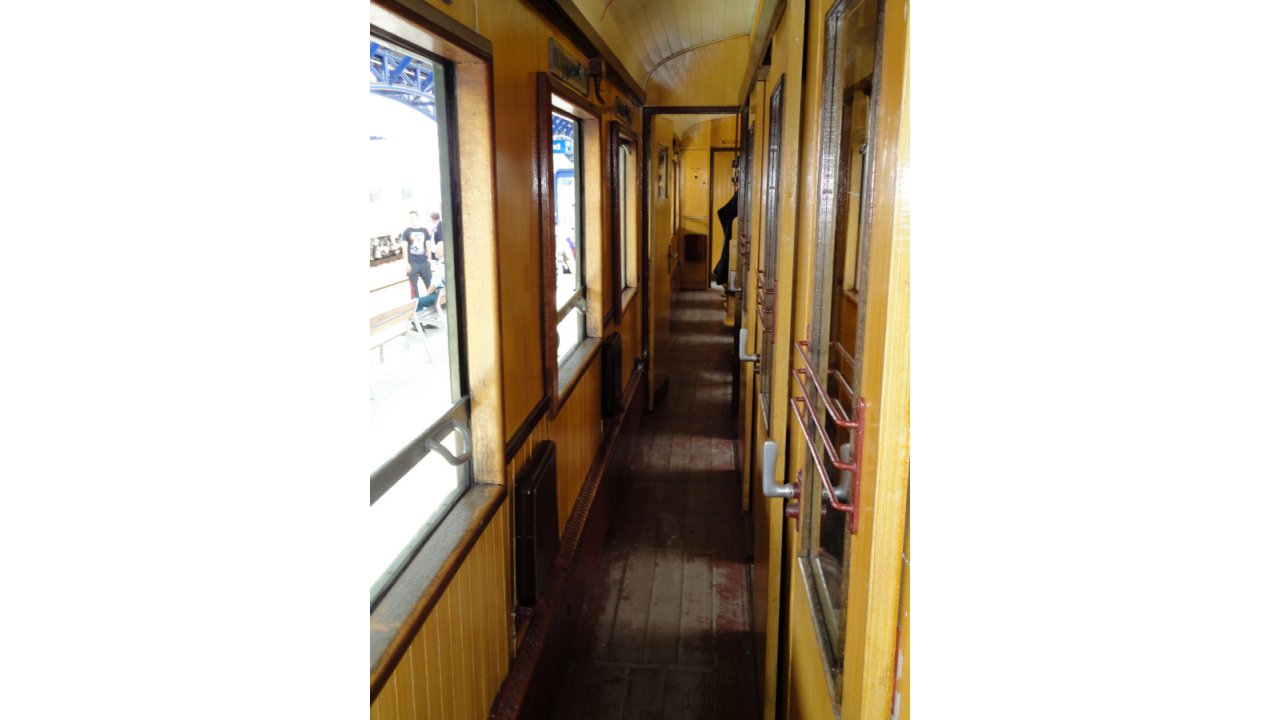For a moment I thought it was a distant hoot of joy from some weekend reveler, but then I heard the unmistakable rhythmic throb of the engine and I realized my mistake. The coal-black train pulled into view. The whistle screeched—quite distinctly train-like up close—and the wheels joined in as it came to a stop. I was about to take a trip along the famous Czech rail route—Posázavský Pacifik. Or so I hoped. There was still the little matter of my ticket.
Choose your own adventure
There are two points of sale for the journey: the international ticket window at Masarykovo Nádraží and Braník Nádraží (fares must be paid in cash). While many people take the train from Braník Prague, riding for three hours to Sázava-Černé Budy (240 CZK for a return ticket) or for another hour to Kácov (280 CZK return), I wanted a shorter trip from Čerčany to Sázava-Černé Budy (100 CZK one way). There are other options, which allow some flexibility in starting points but as luck would have it, the sales clerk didn’t have the ticket I needed. However, she could sell me a reservation ticket for 20 CZK. So I had a place—just not the ticket for the journey.
Posázavský Pacifik is the name for a recreational historical route following the Sázava River, which courses through the hilly countryside of Central Bohemia, southeast of Prague. The route’s name originates in the tramping sub-culture. Various cottages along the route were named after places from the Pacific Coast of America. I didn’t see any remnants of these, though I could have missed them. Nor did I see any Czech “tramps”.
In their place, I saw a lot of train enthusiasts who snapped and filmed the locomotive pulling in, billowing smoke and jetting steam. I was to see many more of them waiting for the train along its path. Unsurprisingly, there were a lot of families, too. The old train is a big hit with kids. Where else can they (almost) hang from the windows and wave wildly to total strangers who happily wave back? In fact, riding with the window down, one’s face to the wind, seems an almost mandatory part of the trip. The fact that kids up to six years of age travel free is another draw card.
Ride the rails on a 40s-era train
As usual, my worrying was for nothing. I managed to get a ticket and found my place in the old-style wagon. The fittings, though a little worn, were definitely authentic, dating back to the fifties. The engine was even older. It is one of the two 464.1 models which were built in 1940. This model, along with the earlier 464, was nicknamed “ušatá” meaning “eared” on account of the panels on the side of the smoke box which guided the flow of smoke.
The steam engine can manage up to 90 kph though the journey was much more leisurely. We passed homes and cottages, where people stood and waved and filmed. Much is made about Czech “unfriendliness” or “reserve”. But dotted along the tracks I saw broad smiles and people enthusiastically waving. It was hard not to notice how this old train seemed to touch people. Maybe it represents a simpler time for them. Maybe it’s the novelty of something quite old. Not that I spent the whole trip pondering national characteristics, I spent quite a bit of time zoning out and just enjoying the cool air pouring into the window, with a little smoke from the stack.
At our destination, a fire engine was waiting to fill the locomotive’s 7,000 liter boiler. Our stop was a good chance to see just how many people were involved in running the machine. Apart from the driver, I counted about five other sooty-faced engineers, most dressed in overalls from the forties, tending to the train. One even added oil to the wheels with an old-fashioned oil can. I hoped to speak with the chief driver but he was reluctant and after promising to answer some questions he wandered off.
A word from your conductors
Fortunately, a group of three young volunteer conductors were happy to speak with me. When I asked why they did it, one responded that trains had been a love through his whole life. Assuming I was disappointed with such a succinct answer, he quickly said that his reason was that simple. His fellow volunteer added that working on the train gave him an opportunity to connect with the past and share that connection with other people.
All three expressed a desire to one day drive the train. They explained that quite a bit of training is involved. A person has to have a background in electrical engineering and be in good physical shape. In the meantime, they were happy to work as conductors in their free-time.
Glorious scenery (and beer!) awaits
The Posázavský Pacifik gives you a chance to connect with other aspects of Czech history, not only rail. For the remaining trips on July 6 and August 17 and 31, passengers can visit the Sázava Monastery, which was established in the 11th century. A free shuttle bus will take passengers there. Another event for history buffs is a guided tour of the castle Český Šternberk, which was returned to the Šternberk family in 1992. On July 6 and August 17 a visit is organized to Chateau Kácov, where you can also stop into the local brewery pub Hubertus brewery. The very last trip of the year on August 31 gives passengers a chance to see how archaeologists work and even try using a medieval mill.
Apart from this old-school puffer, diesel engines also travel along the route, but the steamers have an undeniable romantic appeal evident from the small crowd who’d gathered to see the train off. Sometimes you just need to enjoy a slower pace.
Basic Information:
Tickets available from Masarykovo Nádraží and Braník Nádraží
Round trip to Sázava-Černé Budy 240 CZK
Round trip to Kácov 280 CZK
Seat reservation 20 CZK
The next trains depart July 6 and August 17 and 31, 2013 from Prague Braník to Kácov.
Timetables and other information available at ticket outlets and here.
Note that fares must be paid in cash.
Related articles












 Reading time: 5 minutes
Reading time: 5 minutes 



































